The annual event of replacing the sakabayashi (cedar ball) in the entrance of the Kinen-kan at the Sake Museum was held on October 24. It has long been a custom to hang a new sakabayashi from the eaves of breweries as a sign that the first sake of the new sake season has been made. This practice has been continued by many breweries to this day. In this article, we will introduce the history of the sakabayashi.
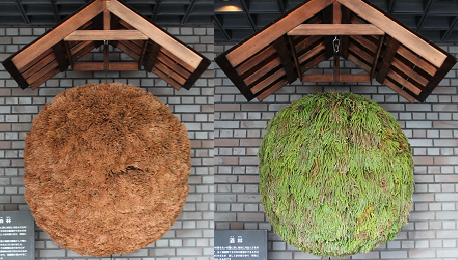
Let’s start by looking at the “Wakan Sansai Zue (Illustrated Sino-Japanese Encyclopedia of the Three Realms)” published in 1712, the middle of the Edo period (1603-1867). Unlike today’s round-shaped sakabayashi, the one depicted in the illustration is simply a bundle of tied cedar branches. The explanation states that (1) the sakabayashi was used by sake stores as a sign heralding the new sake season, and (2) it was made of bundles of cedar leaves. The encyclopedia also states that the reason for using cedar leaves was because of the connection between sake and cedar. As we mentioned in previous Sake Talks, many sake brewing tools are actually made of cedar wood, and this seems to be the reason why cedar leaves are used to make sakabayashi.
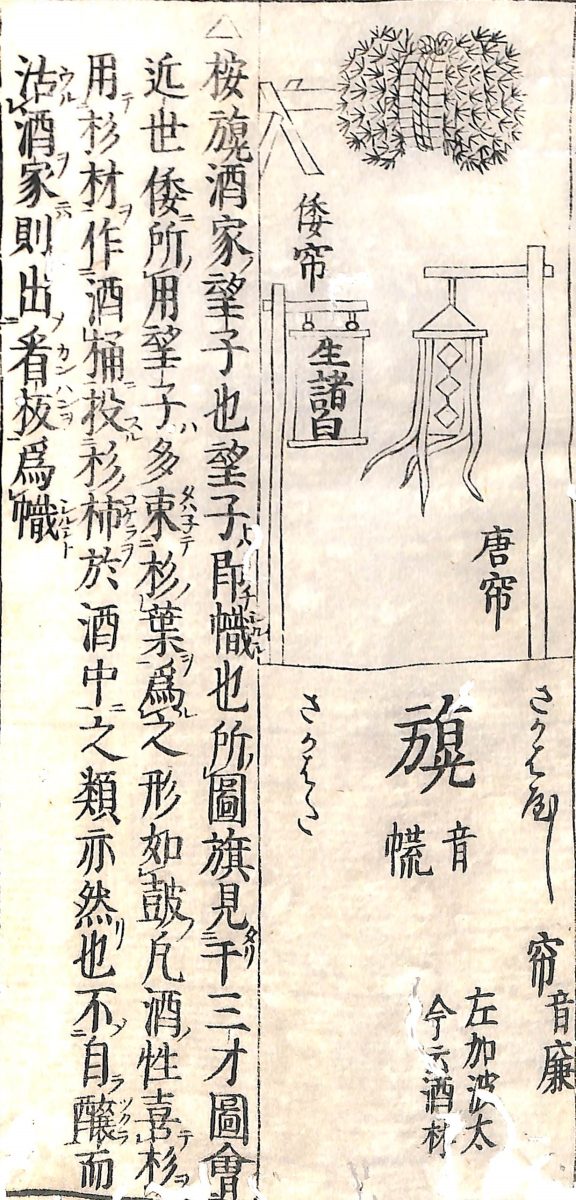
“Nihon Sankai Meisan Zue (Illustrated Famous Products of the Mountains and Seas of Japan)”, published in 1799, states a different reason for using cedar leaves for making sakabayashi. This book first introduces the description found in “Nihon Shoki (Chronicles of Japan, completed in 720)”, of the Oomiwa Jinja Shrine in Nara Prefecture, which is still worshipped by sake brewers as the god of sake. The book notes that since the cedar tree is the sacred tree at Oomiwa Jinja Shrine, the sake brewers’ sign changed from a sake flag to a sakabayashi made of cedar leaves.
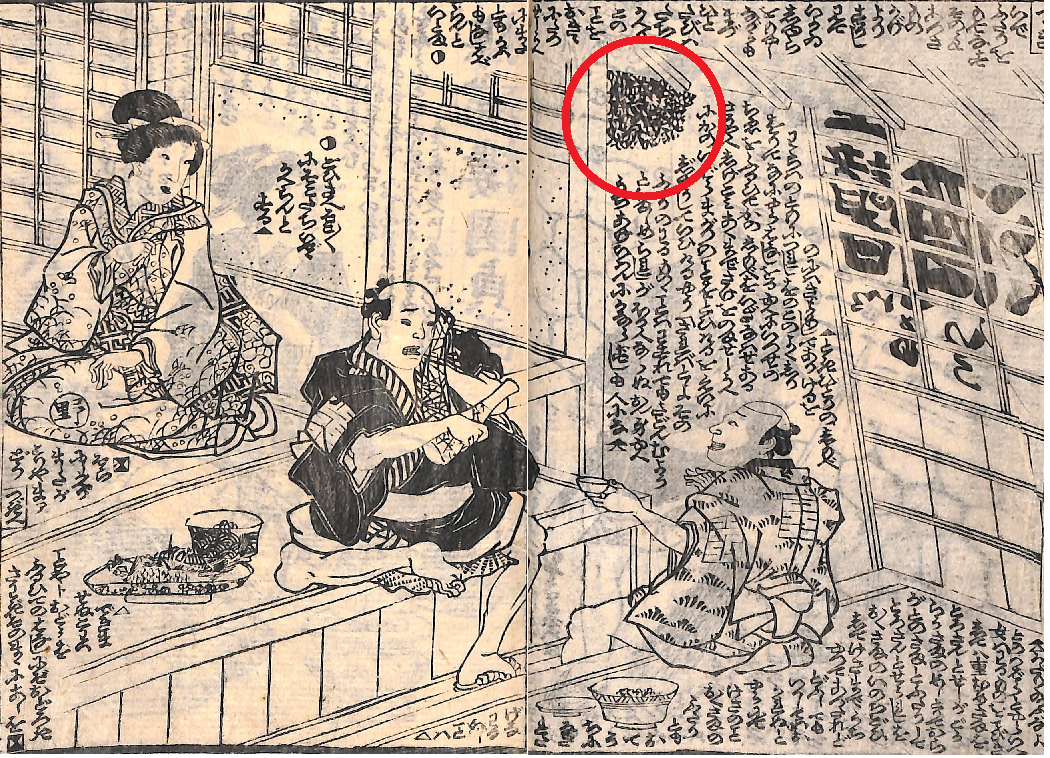
The Sakabayashi Hung From the Eaves of the Doorway is Round.
Finally, let’s take a look at the description of sakabayashi in “Morisada Mankou (Encyclopedia from the Edo Period)”, published in 1837, which summarized the customs of the Edo period. Sakabayashi was made of cedar leaves and was 1 to 2 shaku in size (between 30 and 60 cm in diameter). By the end of the Edo period (the 19th century), the sakabayashi seemed to be round in shape, similar to the present form.
As shown above, the historical documents from the Edo period reveal an inseparable connection between sake and cedar. Today, when few sake breweries make their sake with cedar casks and vats, and the use of cedar casks as sake containers has decreased considerably, sakabayashi seems to be the historical sign pointing to the connection between sake and cedar that existed in the past. We hope you will come and see the sakabayashi at the Kinen-kan before the green leaves turn brown.
Please look forward to the next article which will be posted on December 1st!


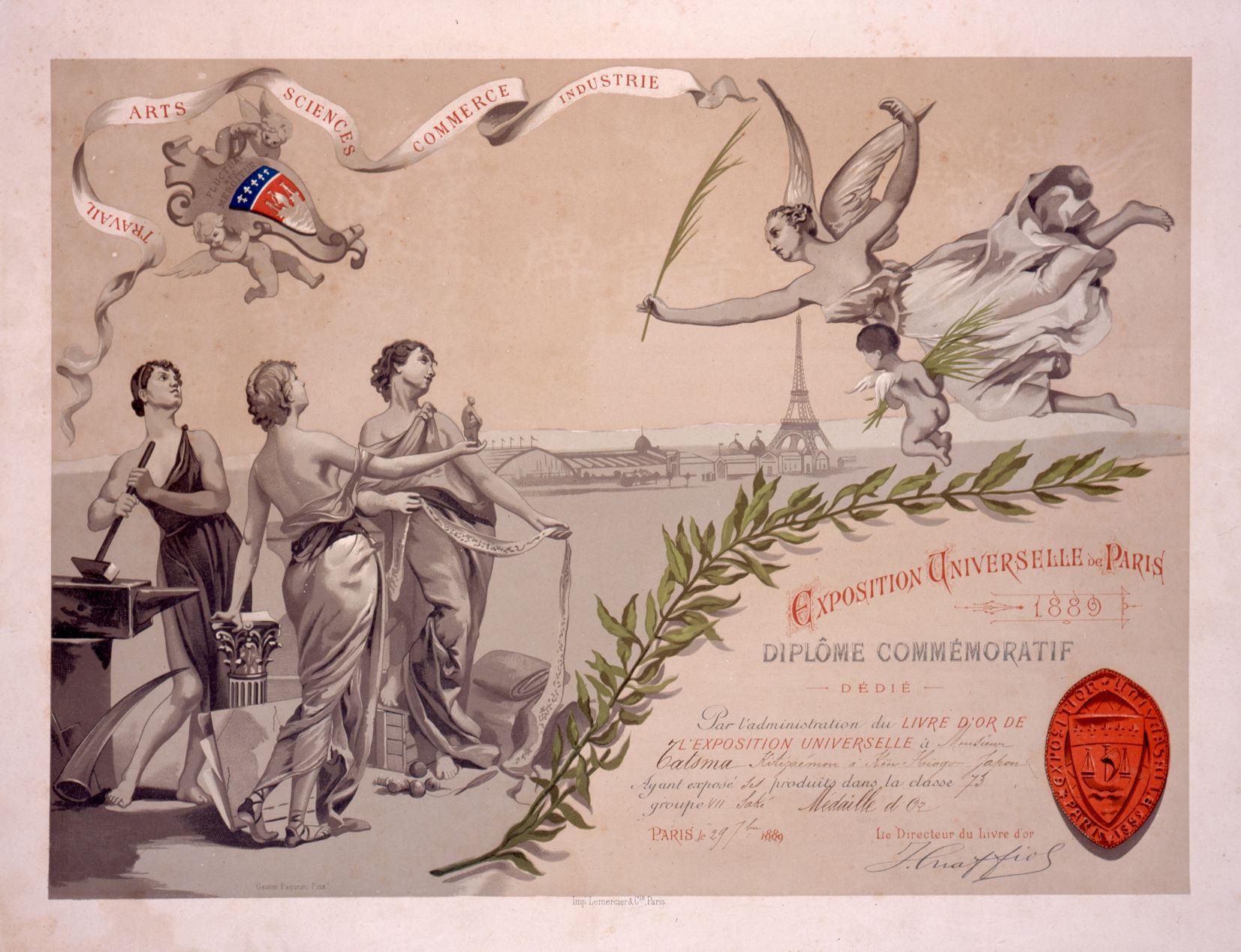
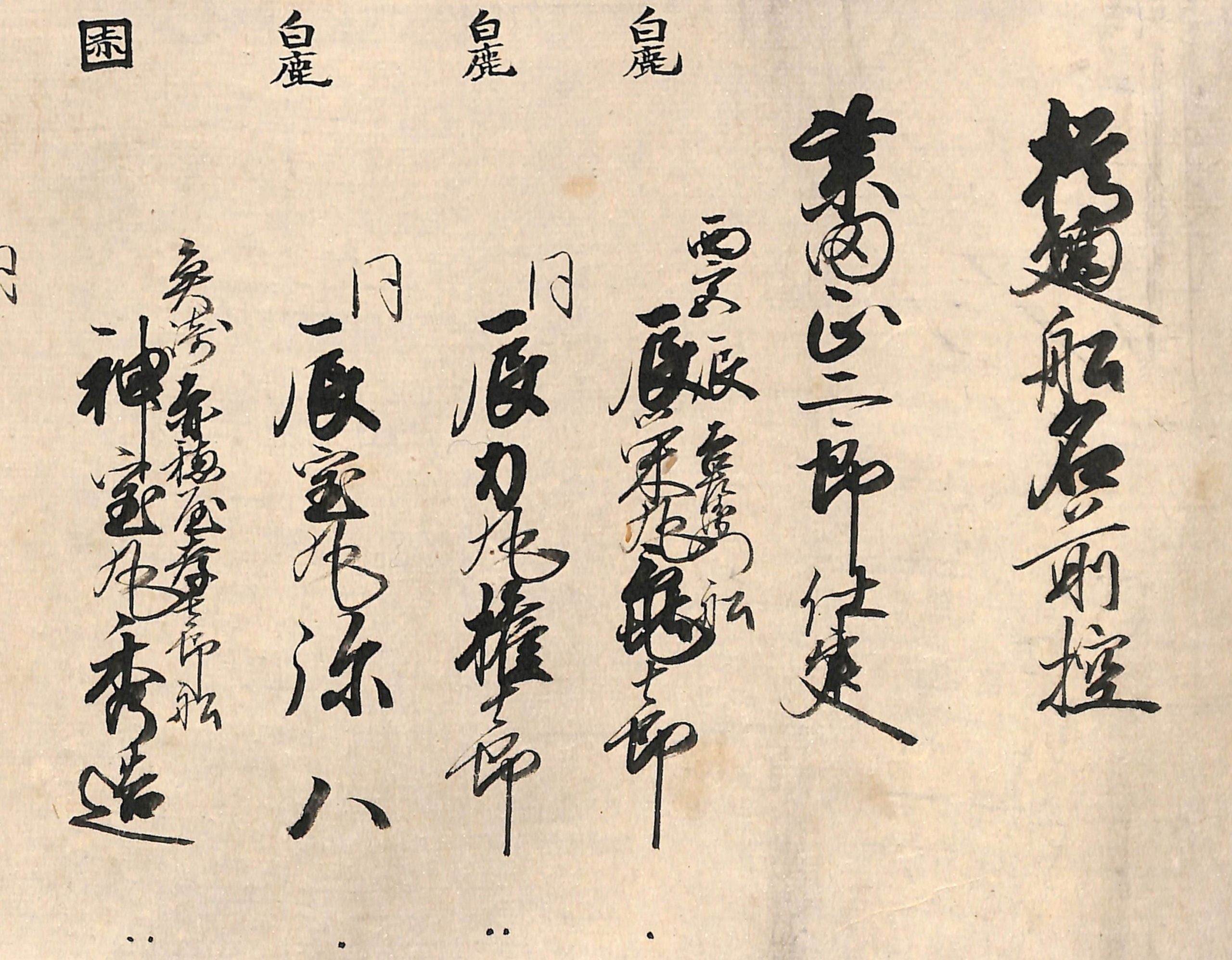
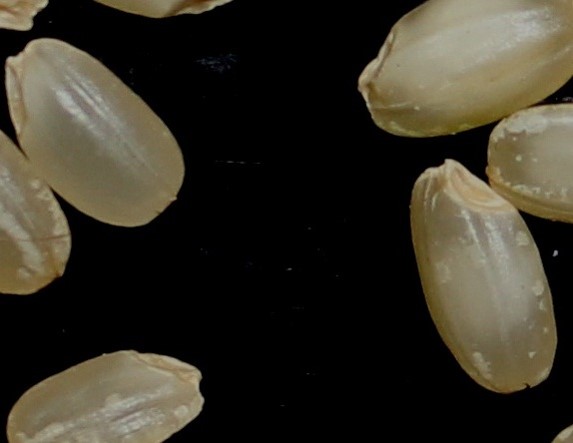


Sake continues to fascinate the world today!